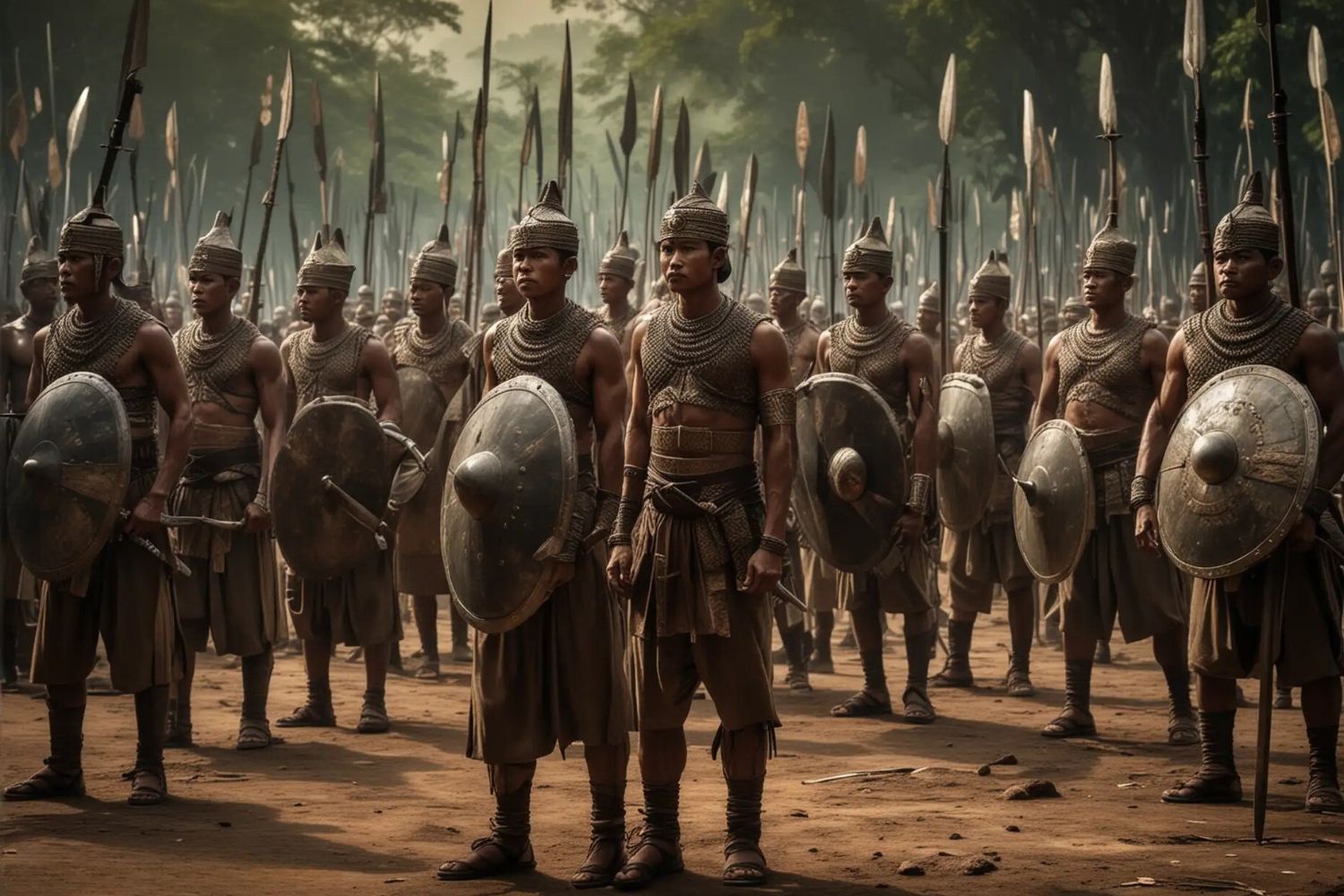
What was the Mahisa Rangka Rebellion? The Mahisa Rangka Rebellion was a significant uprising in the history of Indonesia. It took place in the 13th century during the reign of King Kertanegara of the Singhasari Kingdom. The rebellion was led by Mahisa Rangka, a noble who opposed the king's policies and sought to challenge his authority. This revolt is notable for its impact on the political landscape of the region, as it highlighted the tensions between the ruling class and the nobility. Understanding this rebellion provides insight into the complexities of Javanese history and the power struggles that shaped it.
Key Takeaways:
- The Mahisa Rangka Rebellion in 13th century Indonesia was a failed noble uprising against King Kertanegara's oppressive rule, highlighting the struggle between central authority and local leaders.
- The rebellion's legacy lives on in Indonesian culture and history, serving as a symbol of resistance against oppressive rulers and offering valuable insights into medieval Indonesian politics.
Origins of the Mahisa Rangka Rebellion
The Mahisa Rangka Rebellion is a significant event in Indonesian history. It offers a glimpse into the socio-political dynamics of the time. Let's explore some fascinating facts about this rebellion.
-
The rebellion took place in the 13th century in the Singhasari Kingdom, located in present-day East Java, Indonesia.
-
Mahisa Rangka, the leader of the rebellion, was a nobleman who opposed the rule of King Kertanegara.
-
The rebellion was fueled by dissatisfaction with King Kertanegara's policies, which many nobles found oppressive.
Key Figures in the Rebellion
Understanding the main players in the Mahisa Rangka Rebellion helps us grasp the complexities of this historical event.
-
King Kertanegara, the ruler of Singhasari, was known for his ambitious expansionist policies.
-
Mahisa Rangka, the rebellion's leader, was a prominent nobleman with significant influence among the local aristocracy.
-
Many other nobles and local leaders supported Mahisa Rangka, making the rebellion a substantial threat to the king.
Causes of the Rebellion
Several factors contributed to the outbreak of the Mahisa Rangka Rebellion. These causes highlight the underlying tensions within the kingdom.
-
King Kertanegara's aggressive expansionist policies led to widespread discontent among the nobles.
-
Heavy taxation imposed by the king to fund his military campaigns further fueled the rebellion.
-
The king's attempts to centralize power and reduce the influence of local leaders created significant opposition.
Major Events During the Rebellion
The Mahisa Rangka Rebellion saw several key events that shaped its course and outcome.
-
The rebellion began with a series of coordinated attacks on royal garrisons and officials.
-
Mahisa Rangka's forces managed to capture several key towns and fortresses, gaining significant ground.
-
King Kertanegara responded with a massive military campaign to crush the rebellion.
The Downfall of the Rebellion
Despite initial successes, the Mahisa Rangka Rebellion ultimately failed. Several factors contributed to its downfall.
-
King Kertanegara's military forces were better equipped and more experienced than the rebel forces.
-
Internal divisions among the rebels weakened their ability to sustain the rebellion.
-
The king's strategic alliances with other local leaders helped him isolate and defeat the rebels.
Aftermath and Legacy
The Mahisa Rangka Rebellion had lasting impacts on the Singhasari Kingdom and its subsequent history.
-
The rebellion's failure solidified King Kertanegara's power and allowed him to continue his expansionist policies.
-
Many of the rebel leaders were executed or exiled, leading to a significant reshuffling of the local aristocracy.
-
The rebellion highlighted the deep-seated tensions between the central authority and local leaders, a theme that would recur in Indonesian history.
Cultural Impact of the Rebellion
The Mahisa Rangka Rebellion left a lasting mark on Indonesian culture and folklore.
-
The rebellion is remembered in Javanese folklore as a symbol of resistance against oppressive rulers.
-
Several traditional Javanese plays and stories depict the events of the rebellion, keeping its memory alive.
-
The rebellion's legacy influenced later resistance movements in Indonesian history.
Historical Significance
The Mahisa Rangka Rebellion is a crucial event for understanding the broader historical context of the region.
-
The rebellion provides insights into the political dynamics of the Singhasari Kingdom.
-
It highlights the challenges faced by rulers in maintaining control over a diverse and expansive territory.
-
The rebellion's failure underscored the importance of military strength and strategic alliances in medieval Indonesian politics.
-
The Mahisa Rangka Rebellion remains a significant chapter in Indonesian history, offering valuable lessons about power, resistance, and the complexities of governance.
Final Thoughts on the Mahisa Rangka Rebellion
The Mahisa Rangka Rebellion offers a fascinating glimpse into a pivotal moment in history. This uprising, driven by the people's desire for justice and autonomy, showcases the resilience and determination of those who fought against oppression. Understanding these events helps us appreciate the complexities of historical struggles and the enduring spirit of resistance.
By examining the rebellion's causes, key figures, and outcomes, we gain valuable insights into the socio-political dynamics of the time. This knowledge not only enriches our understanding of history but also serves as a reminder of the importance of standing up for one's beliefs.
The Mahisa Rangka Rebellion remains a testament to the power of collective action and the enduring quest for freedom. As we reflect on these facts, let's remember the lessons learned and the legacy left behind by those who dared to challenge the status quo.
Frequently Asked Questions
Was this page helpful?
Our commitment to delivering trustworthy and engaging content is at the heart of what we do. Each fact on our site is contributed by real users like you, bringing a wealth of diverse insights and information. To ensure the highest standards of accuracy and reliability, our dedicated editors meticulously review each submission. This process guarantees that the facts we share are not only fascinating but also credible. Trust in our commitment to quality and authenticity as you explore and learn with us.
